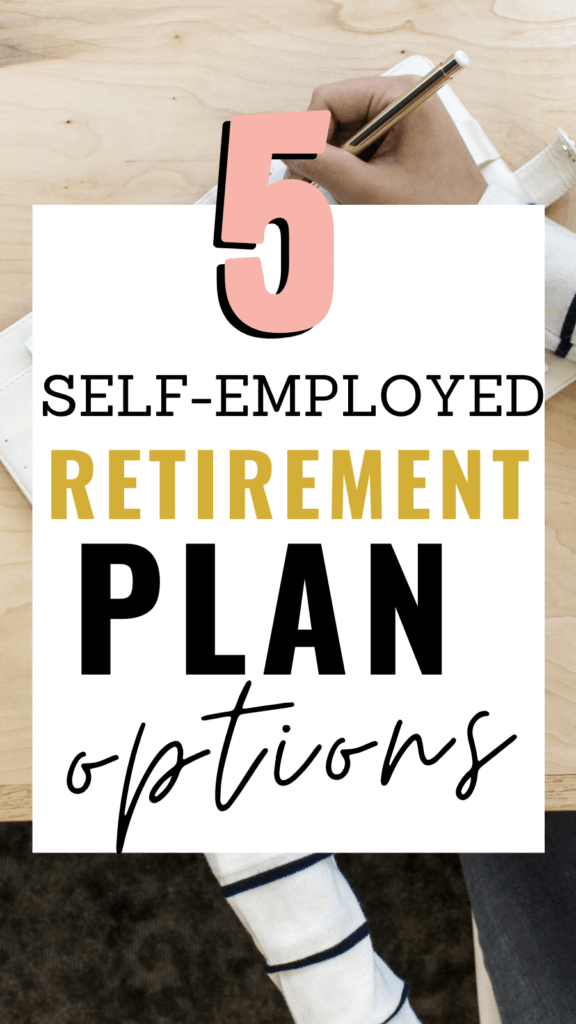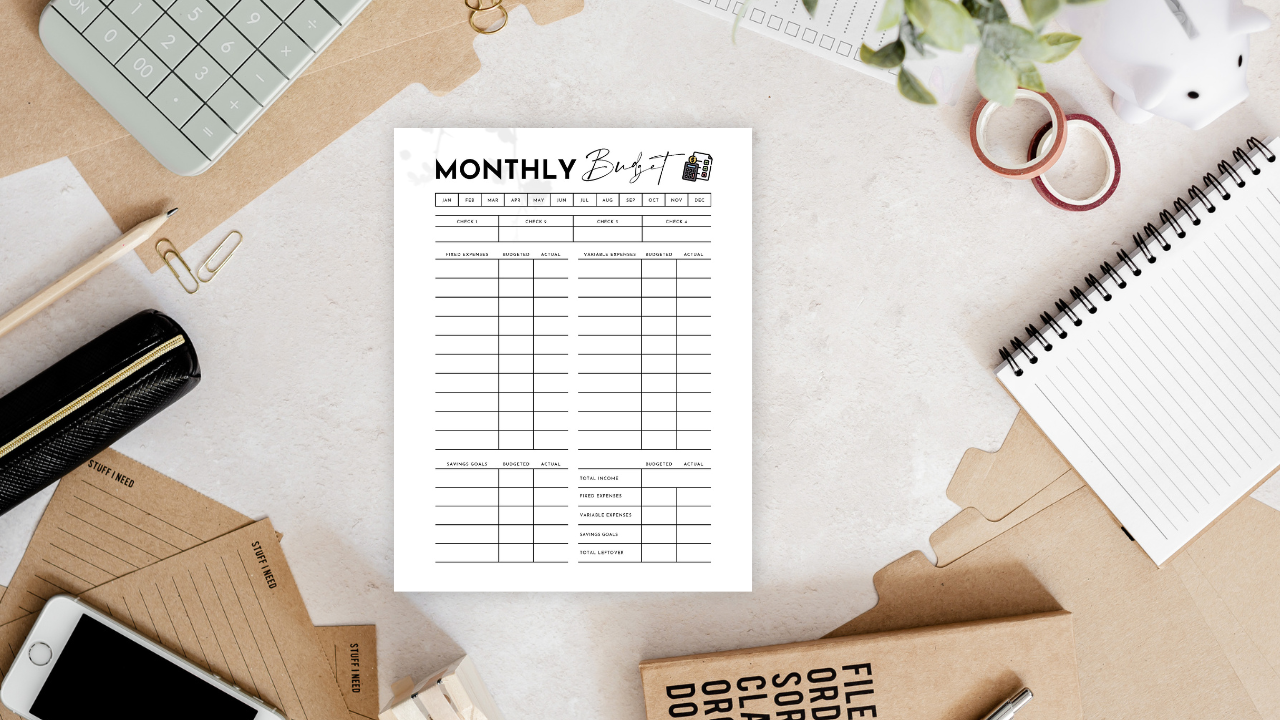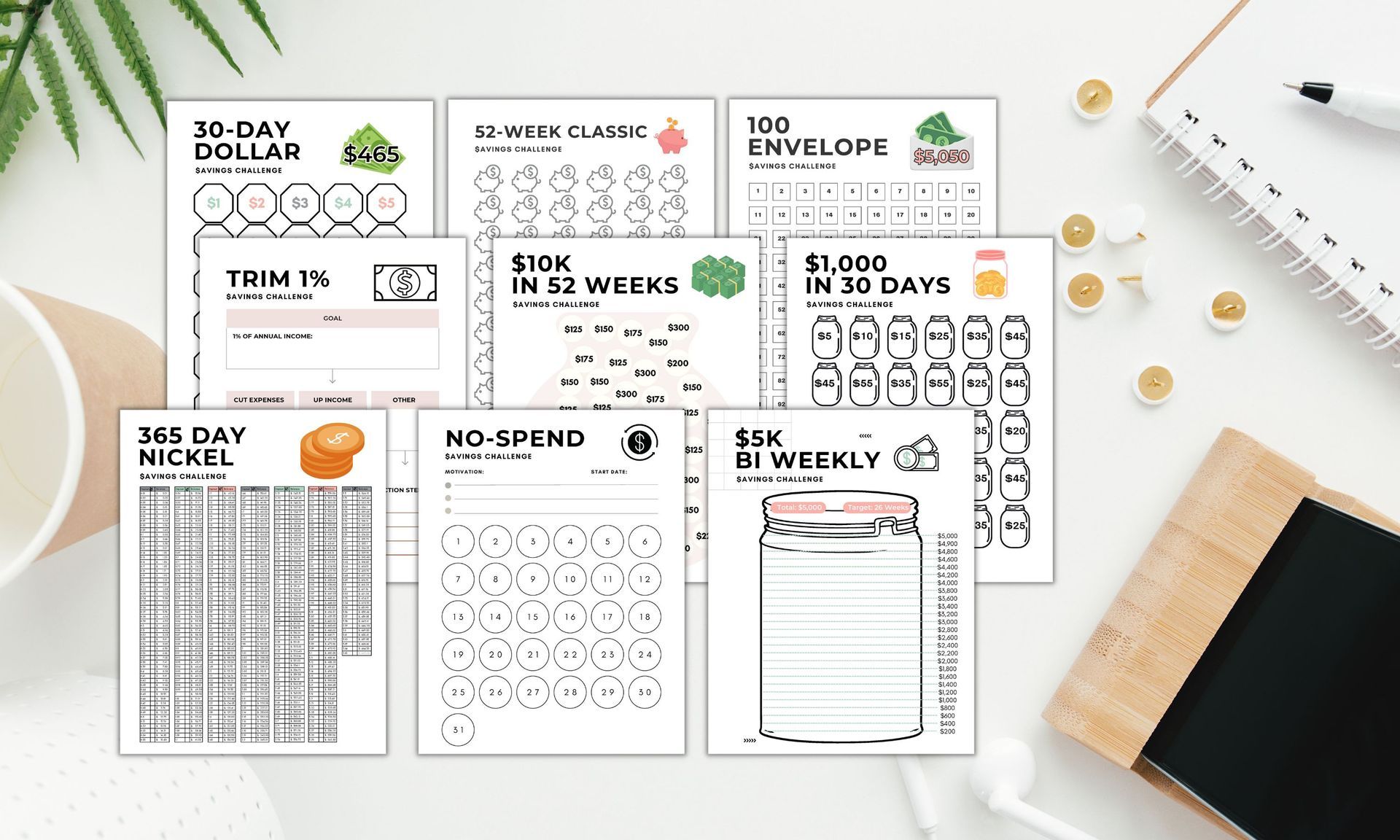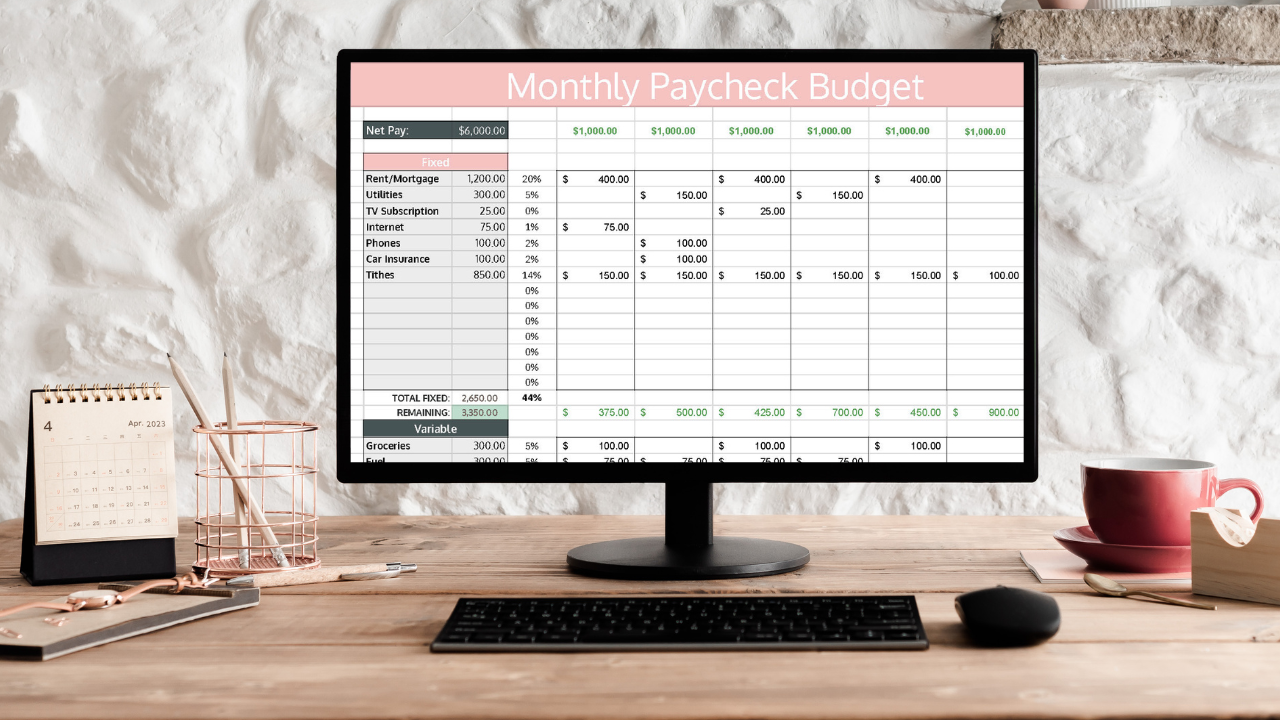
Melanie
De Jong
Melanie
De Jong
Hey There, I’m Melanie! I am a former CPA turned personal finance blogger and mom of three. When you ‘Budget With Mel’, you’ll develop monthly budgets, cost-cutting tactics, and learn new behaviors and beliefs about money. It’s time you took the stress and confusion out of your personal finances.
Hey There, I’m Melanie! I am a former CPA turned personal finance blogger and mom of three. When you ‘Budget With Mel’, you’ll develop monthly budgets, cost-cutting tactics, and learn new behaviors and beliefs about money. It’s time you took the stress and confusion out of your personal finances.
5 Unique Self-Employed Retirement Plans You Need to Know About
If you own and run your own business, you might not be aware of the self-employed retirement plans available to you.
Just because you’re on your own when it comes to investing and retirement planning, doesn’t mean that you have to miss out!
Many times, small business owners are unaware of the retirement planning tools and plans available to them outside of an IRA. As a result, they put off worrying about retirement until it's too late!
Let's take a look at five unique self-employed retirement plans available!
Related Content:
- What You Need to Know About Retirement Planning
- 7 Things You Should NEVER Do in Times of Financial Hardship
- The Best Investing Tips Millennials Need to Know
- How to Invest When it Feels Like You Have No Money
- The 7 Baby Steps to Stop Living Paycheck to Paycheck
- 10 Habits to Start in Your 20's to Retire a Millionaire
- The 7 Most Important Money Habits You MUST Know
- 7 Things Millionaires Do Differently With Their Money
- 7 Surprising I Wish I Knew Earlier About Money
- 5 Key Life Skills Millennials Need to Learn
- Roth IRA vs Traditional IRA: How to Know What's Best for You
OPTIONS FOR SELF-EMPLOYED RETIREMENT PLANS
 1. TRADITIONAL OR ROTH IRA
1. TRADITIONAL OR ROTH IRA
Anyone can open an IRA (Individual Retirement Account). However, whether you can contribute to a Roth or Traditional IRA will depend on your income.
Benefits:
- Flexibility in deciding when distributions are taxed
- No filing requirements
- Lower administrative costs
- Easiest plan to start up
Disadvantages:
- Low contribution limits of $6,000 per individual
- Not an employer sponsored plan, so no business deduction
KEY CONSIDERATIONS
EMPLOYER: No consideration - individual plan.
EMPLOYEE: Individuals may contribute up to $6k per year. However, there are income limits on who can contribute to a Roth IRA.
TAX: Traditional IRA contributions are generally made pre-tax, and Roth IRA contributions are generally made after-tax. Additionally, distributions from a Roth IRA are tax-free. On the other hand, distributions from a Traditional IRA are taxable.
 2. SOLO 401(K
)
2. SOLO 401(K
)
A Solo 401k is available to self employed business owners with no employees (or just a spouse as an employee). In this type of plan, you are the employee AND employer. Consequently, you can make contributions in both capacities. Moreover, you can choose between a Roth or Traditional 401(k).
Benefits:
- Can contribute to either a Roth or Traditional IRA
- Employer contributions are deductible as a business expense
- Flexibility
in deciding when
tax is paid
- If you choose traditional, contributions are tax deductible (depending on your income), and distributions are taxed in retirement.
- If you choose Roth, contributions are made after-tax, and distributions are tax-free in retirement. Note: there are eligibility requirements based on your income level for contributing to a Roth IRA. F ind out more about the differences between a Traditional and Roth IRA here.
- High contribution limits
- As the employee, you can contribute up to $19,500 in 2020
- As the employer, you can contribute up to 25% of your net self-employment income, up to $57,000 for 2020
- Contributions to employee accounts are deductible as a business expense
Disadvantages:
- You cannot have any employees (except your spouse)
- Contribution limits apply per person,
not per plan
- If you contribute to a plan outside of your business you must factor that into the contribution limit
Example: You open a Solo 401(k), and make $55,000 in 2020. You make the $19,500 max employee contribution, and contribute the employer portion of $13,750 (25% of $55k). Your total contributions are then $33,250, the most you can contribute for 2020.
KEY CONSIDERATIONS
EMPLOYER: Can contribute up to 25% of compensation or net earnings from self-employment.
EMPLOYEE: Can contribute 100% of earned income, up to $19,500. Total contributions can’t exceed $57,000.
TAX: For employees, tax deductibility depends on type of IRA. Learn more about the differences here. For employers, all contributions are deductible as a business expense.
 3. SEP IRA
3. SEP IRA
A SEP (Simplified Employee Pension) IRA plan allows employers to contribute to traditional IRAs (SEP-IRAs) set up for employees . A business of any size can establish a SEP. This is arguably one of the best self-employed retirement plans.
Benefits:
- Doesn’t have the startup costs of a conventional retirement plan
- Low administrative costs
- No filing requirements
- Employer of any size can start a SEP plan
- Can contribute up to 25% of each employees pay, up to $57,000, whichever is less
- Contributions to employee accounts are deductible as a business expense
Disadvantages:
- Only employer can contribute to the plan
- Employer MUST contribute equally (in terms of percentage, not dollars) for all eligible employees – and you are counted as an employee as the owner
- Employees are always 100% vested
- Distributions in retirement are taxed as income because there is no Roth option for a SEP IRA
Example: You open a SEP IRA. You have one employee. Your net self employment income is $75,000 and your employees income is $50,000. You decide to contribute 10% of your business earnings to your retirement account, or $7,500. Because you contributed 10% of your own compensation, you have to contribute 10% of your employees compensation, or $5,000.
Key point: This plan works especially well for self employed individuals with no employees.
KEY CONSIDERATIONS
EMPLOYER: Can contribute up to 25% of net earnings from self-employment, up to $57,000 in 2020.
EMPLOYEE: Employers must contribute equally for all employees. In other words, if you contribute 15% of your own income, you must contribute 15% of each of your employees income.
TAX: Employees contributions are tax-deductible on their own return, but distributions to participants are taxed. Employer contributions are deductible as a business expense.
 4. SIMPLE IRA
4. SIMPLE IRA
A Simple (Savings Incentive Match Plan for Employees) IRA is a plan available to small businesses with up to 100 employees . Essentially, it is a start-up retirement savings plan for small businesses.
Benefits:
- Doesn’t’ have start up costs of a conventional retirement plan
- Low administrative costs
- No filing requirements
- Small businesses with up to 100 employees can start a SIMPLE IRA plan
- Not limited by annual compensation limit (but limited by 3% of employee’s compensation)
- Contributions to employee accounts are deductible as a business expense
Disadvantages:
- Employer cannot have any other kind of retirement plan (like a SEP IRA)
- Employees are always 100% vested
- Lower contribution limits – up to $13,500 in 2020.
- Must adopt an employer
contribution policy of either:
- A dollar for dollar matching contribution for employees, up to 3% of each employee’s compensation
- 2% nonelective deferral
- This means even if an employee doesn’t elect to contribute to plan, employer must make a contribution equal to 2% of compensation (up to $285k for 2020)
- A stiff 25% penalty on any withdrawals made within two years of opening the plan (including rollover)
Example : You are a self employed small business owner with 4 employees. You adopt the policy of matching each employees contribution up to 3% of annual income, rather than nonelective contributions. One employee makes $40,000 for the calendar year and starts contributing to the plan beginning in June. The employee contributes 2% of his salary, or $400. Regardless of when the employee began contributing, you must contribute 2% of their annual salary. Thus, you will contribute $800.
KEY CONSIDERATIONS
EMPLOYER: Must adopt a matching policy of either a 3% employee contribution match, or a flat 2% match.
EMPLOYEE: Can contribute up to $13,500 in 2020 (doesn’t take into account employer match).
TAX: Employees contributions are tax-deductible on their own return, but distributions to participants are taxed. Employer contributions are deductible as a business expense.
 5. DEFINED BENEFIT PLAN
5. DEFINED BENEFIT PLAN
You may set up your own pension in retirement as a self-employed individual. However, this doesn’t come without a catch- these types of plans are expensive to set up and maintain.
A defined benefit pension plan offers a guaranteed income stream in retirement. Because of the high cost of this plan, mainly government funded institutions offer it. Only 10% of private businesses offer a pension plan! Here's why.
Benefits:
- Business of any size can set up this plan
- Provides a predictable benefit
- Flexibility in vesting schedules
- High contribution limits
Disadvantages:
- Very costly
- High administrative fees
- Require commitment to fund the plan every year
- Required to file Form 5500
KEY CONSIDERATIONS
EMPLOYER: The employer carries a heavy cost burden with this type of plan. Additionally, they are required to keep plan funded at a certain amount.
EMPLOYEE: Enjoys guaranteed income streams in retirement.
TAX: Contributions are generally tax deductible, and distributions in retirement are taxed as income.
TO CONCLUDE
If you didn't know about these self-employed retirement plans available to you as a small business owner, now you know! Take the next step to save for your future by starting a plan for you and/or your employees.
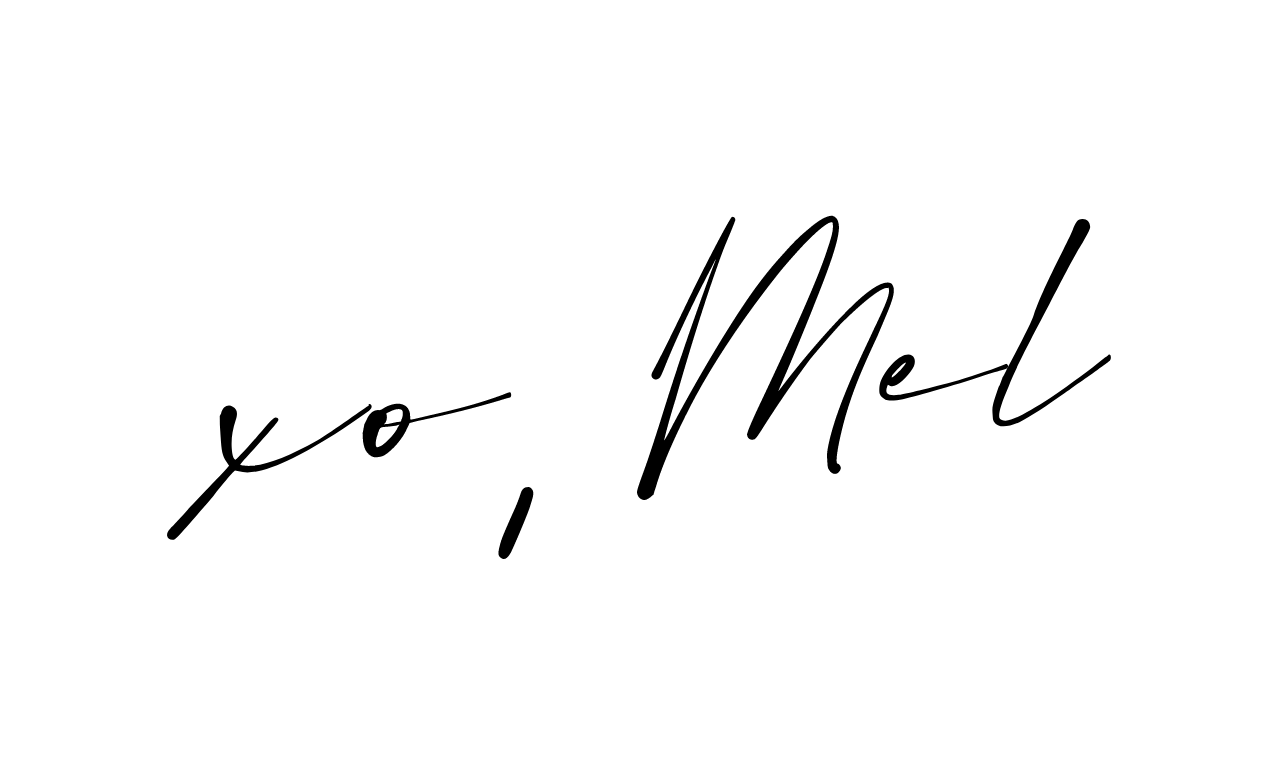
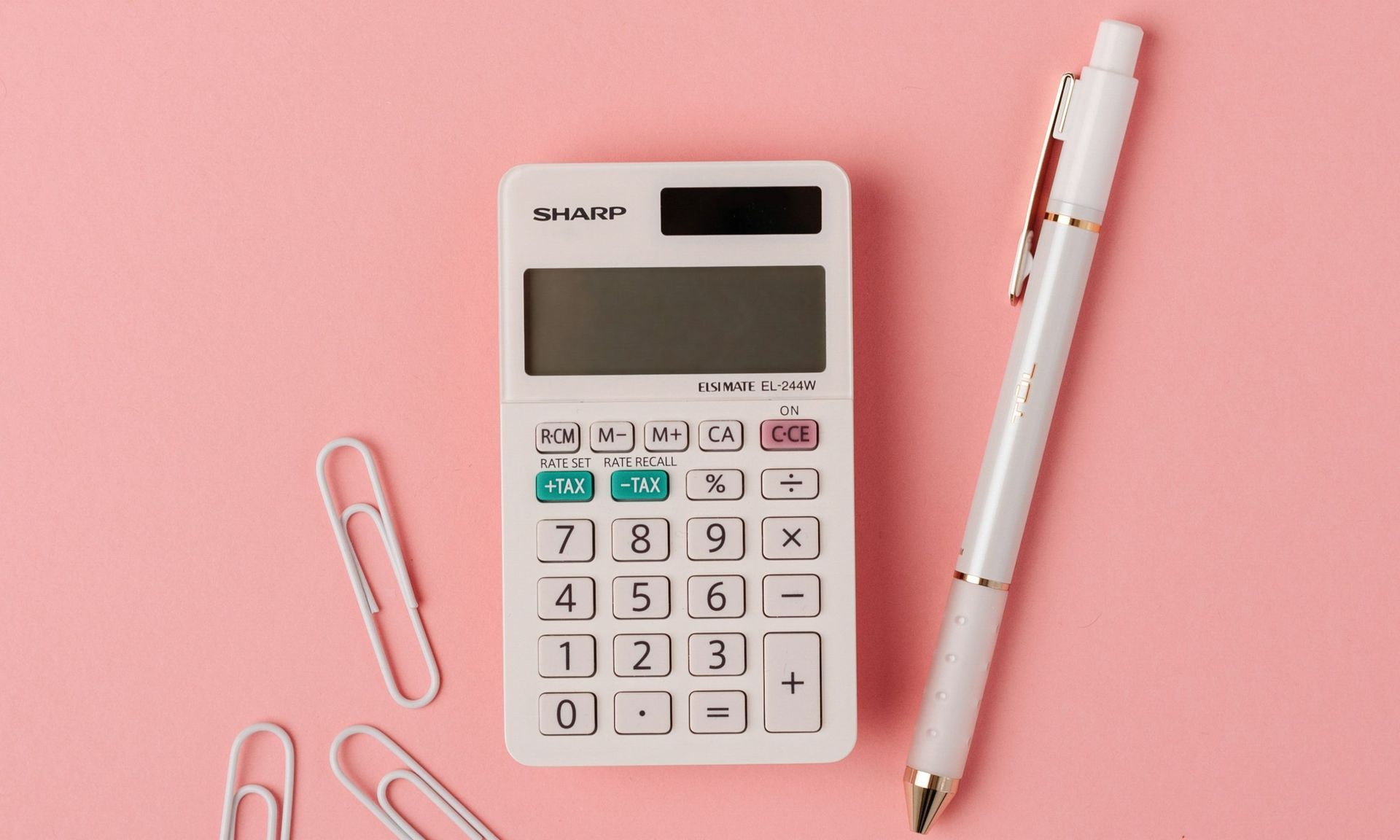
FOLLOW
ON IG






